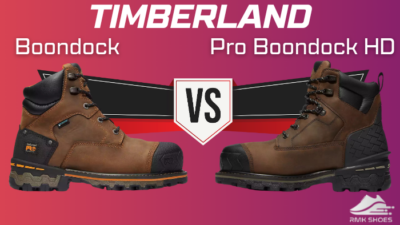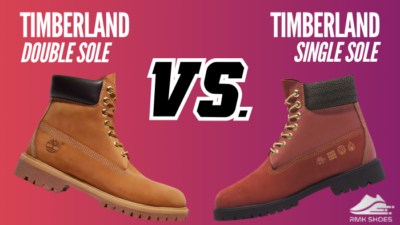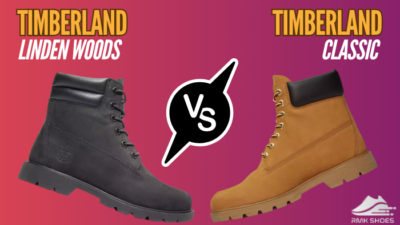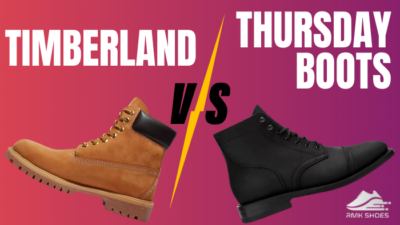In the competitive arena of running shoes, Nike offers two formidable contenders – the Nike Pegasus and the Nike Tempo Next Percent.
Whether you’re drawn to the iconic comfort of the Pegasus or enticed by the cutting-edge tech in Tempo Next, the choice isn’t easy.
Having clocked the miles in both, I’m here to dissect their features, unveil the pros and cons, and guide you in choosing your ideal running companion.
Let the Nike Pegasus vs Tempo Next face-off begin.
Overview of Nike Tempo Next% and Nike Pegasus 40
The Pegasus and Tempo Next are two popular running shoe series from Nike that offer different features and benefits for runners of different levels and preferences.
Pegasus is a classic daily trainer, while Tempo Next is a new innovative speed trainer.
Nike Tempo Next
The Tempo Next, a speed trainer designed as Nike’s marathon ally, follows the iconic Alphafly Next famously worn by Eliud Kipchoge in his sub-two-hour marathon.
It is tailored for runs under 15 kilometers and boasts highly responsive cushioning, featuring a ZoomX and React foam midsole with a composite plate and ample Zoom Air units.
The adaptive Flyknit upper pairs seamlessly with a durable rubber outsole, ensuring enhanced grip with its robust rubber nubs. These innovations reflect Nike’s commitment to top-tier performance, providing purpose-built choices for runners.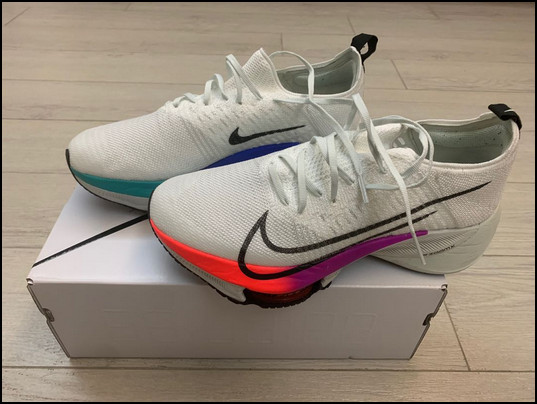
Nike Pegasus
The Pegasus, an enduring classic with a 40-year legacy, is a versatile daily companion adept at conquering distances and paces.
In its evolution since 1983, the Pegasus has refined fit, comfort, and performance across 40 iterations.
The Pegasus 40, the latest gem, introduces a Flyknit upper crafted from recycled materials and a ZoomX and React foam midsole for an energetic ride. Also, it has a robust rubber outsole, ensuring traction and durability.
Nike pushed the legendary Pegasus model. They put new technologies and eminent each model. Even if you check the Nike Pegasus 36 & 37 iteration, you will find they have some notable changes to the 40th iteration.
Feature Comparison of Nike Tempo Next% and Nike Pegasus 40
Now that we’ve explored the individual journeys of the Pegasus and Tempo, let’s lay their features bare in a head-to-head comparison. This will help you decipher which shoe aligns best with your running aspirations.
| Feature | Nike Air Zoom Tempo Next% | Nike Pegasus 40 |
|---|---|---|
| Release Year | 2022 | 2023 |
| Intended Use | Daily training, tempo runs, racing | Daily training, versatile |
| Weight (Men’s 10) | Approx 270 grams or 9.5 oz | 288 g or 10.2 oz |
| Upper Material | Flyknit booty construction with TPU overlays on the toe box, internal cage reinforcements | Engineered mesh |
| Midsole Material | ZoomX foam, React foam (heel and midfoot), Zoom Air units in forefoot, composite plate | Nike React Foam and Zoom Air unit in the forefoot |
| Outsole Material | Rubber outsole with thick forefoot coverage and strips on the rearfoot | Durable rubber with waffle tread |
| Cushioning | Highly Responsive and Propulsive | Moderate and Balanced |
| Fit | Streamlined and Race-Ready | Wider Platform for Stability |
| Breathability | Slightly limited due to TPU overlays and felt backing in certain areas | Great |
| Lacing System | Linear-textured laces, double eyelets | Traditional lacing style with webbing system |
| Price | $150 – $170 | $100 – $130 |
| Stack Height | 36 mm in the forefoot and 46 mm in the heel | Approximately 31mm heel, 21mm forefoot |
| Drop | 10 mm | 10 mm |
With this breakdown as your compass, dive deeper into the crucial changes between these Nike titans in the next section.
Primary Differences between Nike Pegasus 40 and Air Zoom Tempo Next%
Nike creations, the Pegasus 40 and Tempo Next%, diverge dramatically in their focus and running experience.
Here’s a breakdown of their key differentiators:
1. Design and Purpose
The Pegasus 40 and Tempo Next% showcase distinct design philosophies.
The Pegasus, renowned for its versatility, serves as a reliable all-around running shoe. Its design seamlessly transitions from short sprints to longer distances, making it a dependable choice for diverse terrains.
On the other hand, the Tempo Next stands out as a specialized training companion specifically engineered for daily training.
Geared towards durability and impact protection, it positions itself as an evolution from the Alphafly line.
While the Pegasus 40 excels in adaptability and durability, the Air Zoom Tempo Next% focuses on delivering a responsive daily run.
The Tempo Next% is a new model designed with intent. It is a toned-down version of the Alphafly series and successfully achieves its purpose.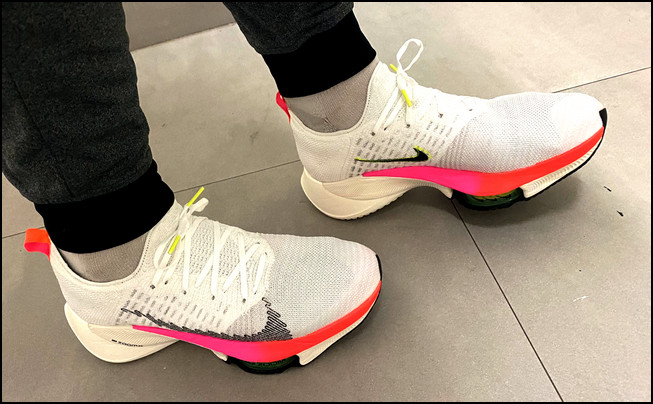
2. Upper Construction
Pegasus 40 features a well-balanced upper with an engineered mesh that ensures comfort and breathability. Also, the webbing style lacing provides a secure fit.
In contrast, Tempo Next% adopts a Flyknit booty construction, prioritizing lightweight breathability.
Also, its minimal overlays on the toe box contribute to a streamlined design, while internal cage reinforcements enhance midfoot support.
Both models offer commendable lockdown, but the Pegasus leans towards adaptability with its mesh design. Meanwhile, the Tempo Next emphasizes lightweight breathability through its innovative Flyknit construction.
The upper construction of the Pegasus 40 is more versatile and breathable than the Tempo Next%.
3. Midsole Structure
The midsole of the Pegasus 40 is designed for a smooth and consistent ride, featuring a single-density construction made entirely of React foam. This React foam composition offers excellent responsiveness and cushioning, enhancing the overall running experience.
In addition to Zoom Air technology, the Pegasus also features encapsulated Zoom Air units in both the forefoot and heel.
The Zoom Air unit in the forefoot covers a significant portion of the area, providing optimal cushioning and responsiveness during toe-off and push-off.
Also, the React foam used in the Pegasus’ midsole is known for its durability and resistance to midsole compression, ensuring that the shoe maintains its performance over an extended period.
Conversely, the midsole of the Tempo Next% utilizes a combination of ZoomX and React foam, offering a unique blend of responsiveness and cushioning.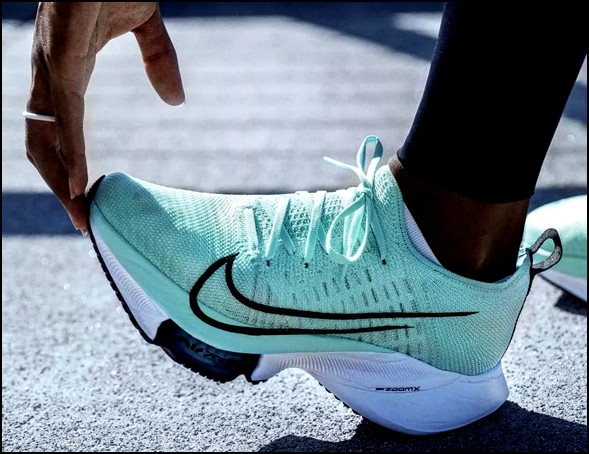
The Tempo’s midsole features firmer React foam in the heel and softer ZoomX foam in the forefoot, providing a balance between support and comfort. While the Tempo incorporates Zoom Air technology, its implementation differs from Pegasus’s.
Instead of encapsulated Zoom Air units, the Tempo has visible Zoom Air pods on the side of the shoe. These pods offer targeted cushioning and responsiveness, enhancing the shoe’s performance during runs.
However, it’s important to note that the Zoom Air pods in the Tempo do not cover as large an area as the encapsulated Zoom Air units in the Pegasus.
As a result, the Tempo may provide a slightly different sensation and level of plushness compared to the Pegasus.
Nevertheless, the combination of ZoomX and React foam in Tempo’s midsole ensures a responsive and supportive ride, making it suitable for runners seeking a balance of cushioning and speed.
The midsole of the Nike Air Zoom Tempo Next has some superior technologies, which also justifies its price.
4. Outsole Configuration
The Nike Pegasus lineup has a durable and versatile outsole design. Its rubber outsole, featuring a waffle tread pattern, provides reliable traction on various surfaces.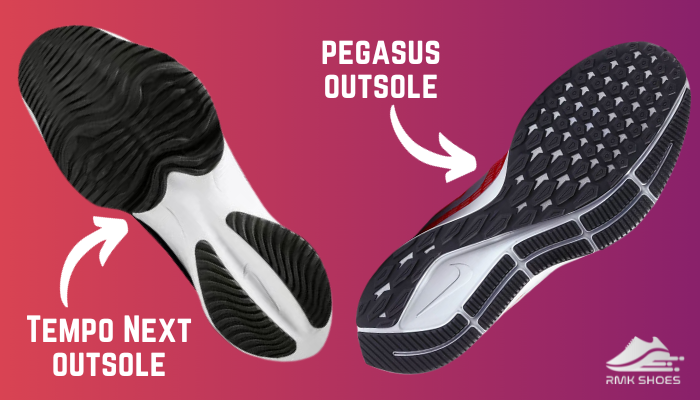
Overall, it balances grip and longevity, making it a dependable choice for diverse running conditions.
Conversely, the Air Zoom Tempo Next% takes a more specialized approach.
Its outsole features a thick layer of rubber on the forefoot and substantial strips on the rearfoot. Also, the forefoot outsole has an aggressive tread design.
This configuration prioritizes traction and durability, especially during explosive forefoot strikes.
The Tempo Next% has a more durable-looking outsole, but the Pegasus 40’s rubber outsole provides superior durability and traction.
5. Cushioning and Comfort
Regarding plushness and support, the Pegasus lineup never lets you down.
In my daily training, the Pegasus provides a balanced and adaptive feel. It combines the Nike React foam and Zoom Air unit at the forefoot, providing a responsive yet cushioned experience.
The Pegasus provides a plus sensation without compromising the responsiveness needed for different running paces.
That said, the Air Zoom Tempo Next% amazed me with its performance.
It features Nike’s premium ZoomX foam in the midsole and offers a firm yet responsive ride. Also, adding the React foam in the heel and midfoot contributes to durability and stability.
Furthermore, the explosive Zoom Air unit in the forefoot provides an extra layer of responsiveness and energy return.
The Pegasus focuses on well-rounded and adaptable cushioning, while the Tempo Next leans towards a firmer yet responsive feel, mainly designed for tempo runs.
My trusty Nike Pegasus 40 provides a plush and comfortable riding experience.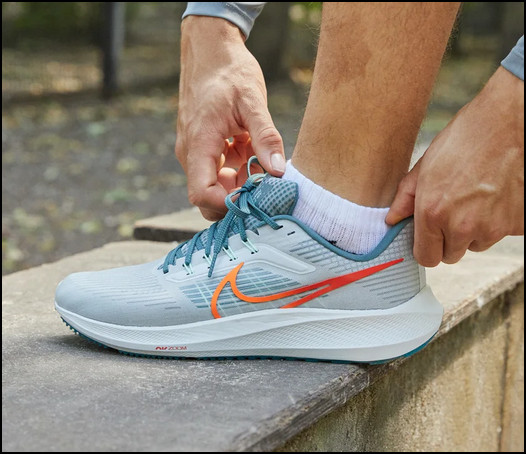
6. Weight and Fit
While slightly heavier than the Tempo Next, the Pegasus offers a balanced and plush cushioning that ensures a comfortable and stable feel during your runs.
Weighing approximately 10.2 oz for a men’s size 10, the Pegasus provides reliable support without compromising comfort.
The Pegasus series is also tweaking its overall weight game.
For example, there is a significant 1 oz weight difference among the Nike Pegasus 38 and 39. But the 40th version of the Peg also raises a slight weight.
Its Flyknit upper of the Pegasus, crafted from recycled materials, contributes to its adaptive fit, allowing it to conform to the shape of your foot.
This ensures a consistent fit throughout your run, providing you with the confidence and support you need. The Pegasus is designed to fit true to size, with a medium width and volume that caters to a wide range of foot shapes.
| Model | Weight | Fit |
|---|---|---|
| Pegasus 40 | 288 g or 10.2 oz | True to size, spacious, and accommodating |
| Air Zoom Tempo Next% | 270 grams or 9.5 oz | True to size, designed for tempo runs, secure fit |
On the other hand, the Tempo Next boasts a lighter construction than the Pegasus, weighing approximately 9.5 oz for a man’s size 10.
This lightweight design, combined with its firmer and more responsive cushioning, delivers an explosive and efficient running experience.
The Tempo Next features a Flyknit upper, similar to the Alphafly Next, which enhances breathability and flexibility. This allows your foot to move naturally and comfortably during your runs.
It’s worth noting that the Tempo Next has a snug and narrower toe box, providing a secure and locked-in feel.
Like the Pegasus, the Tempo Next is designed to fit true to size, with a medium width and volume accommodating most foot shapes.
The Nike Air Zoom Tempo Next% is lighter and has a bootie-like construction, providing a great overall fit.
7. Price to Performance
Considering the $100 – $130 price-to-performance ratio, the Nike Pegasus is a commendable investment for its versatile capabilities across various running scenarios.
The price aligns well with the shoe’s ability to cater to a broad audience, offering a reliable and comfortable experience for daily training.
On the other hand, the Nike Tempo Next, with a higher price tag ($150 – $170), accommodates a more specific performance niche, excelling in tempo runs.
While the cost may be steeper, the shoe’s unique features, including the ZoomX and React foam combination, provide a responsive and snappy ride, making it worth the investment for those focused on tempo and faster-paced efforts.
Pegasus provides excellent value for its versatility at a moderate price. Tempo Next, on the other hand, is more expensive but offers specialized performance, particularly for tempo runs.
The Nike Pegasus has been my dependable companion on countless runs, offering a versatile blend of support and comfort. Its adaptability makes it my go-to for everyday training, handling various terrains effortlessly.
Meanwhile, the Nike Tempo Next brings a different level of excitement to my tempo runs. Combining ZoomX and React foam gives me a responsive and exhilarating experience.
Although it comes at a higher price, Tempo Next’s exceptional performance during tempo workouts makes every penny worth it for the speed enthusiast in me.
Benefits and Drawbacks of Nike Pegasus 40 and Nike Tempo Next%
Now that we have a good grasp of the distinctions between these two models. Let’s compare them in terms of their advantages and disadvantages.
By assessing these, you’ll gain valuable insights to help you choose the shoe that best suits your running style and preferences.
Nike Pegasus
- »Balanced and plush cushioning for a comfortable and stable feel.
- »Pegasus is versatile and can be used in different types of running needs.
- »Flyknit upper (recycled materials) offers a consistent and adaptive fit.
- »True-to-size fit accommodates a wide range of foot shapes.
- »Comparatively affordable than the Tempo Next.
- »Lack the snappy response desired for faster-paced runs.
Nike Tempo Next
- »Lightweight construction for agile running.
- »Firmer and more responsive cushioning for explosive energy return.
- »Breathable and flexible Flyknit upper.
- »Full of technologies that you can find in more prominent Nike running shoes.
- »Ensures a good overall fit.
- »Higher price range.
- »Lack the same level of plush cushioning as the Nike Pegasus.
Nike Pegasus 40 vs Nike Tempo Next%: Which One is Better?
The Nike Pegasus 40 dominates as an everyday champion. Its comfortable cushioning, stable platform, and versatile design make it ideal for high mileage, recovery runs, and casual training.
Also, it’s reliable, durable, and comes at a competitive price.
Meanwhile, the Nike Tempo Next% claims the performance throne.
The ZoomX foam, composite plate, and Zoom Air unit make it a weapon for tempo runs, interval training, and shaving seconds off your personal best.
Ultimately, the Pegasus will win if you prioritize comfort, durability, and mileage.
Furthermore, when you emphasize exhilarating speed and performance, sliding your foot on the Nike Air Zoom Tempo Next% is the best pick among these two.
FAQs
What is Nike Tempo good for?
The Nike Tempo is a versatile running shoe that can be used for various distances and workouts, including tempo runs, speed training, and shorter races. It features many of the modern technologies that runners demand.
Can you run a marathon in Nike Tempo Next?
While the Nike Tempo Next is a lightweight and responsive running shoe, it may not provide enough cushioning and support for the entire duration of a marathon. It is better suited for shorter distances and faster-paced runs.
Are Nike Pegasus good daily trainers?
Yes, Nike Pegasus is an excellent choice for daily trainers. They provide a comfortable and cushioned ride, making them suitable for daily activities, gym workouts, and light running sessions.
How long does it take to break in Nike Pegasus 40?
The break-in period for Nike Pegasus 40 can vary depending on personal preference and foot characteristics. However, it typically takes a few runs to adapt to the shoe’s fit and feel.

